In Electrical Installation Condition Reports (EICR), non-fire-rated downlights typically receive a C2 classification, indicating a potentially hazardous condition arising from non-compliance with Part B of the Building Regulations, which demands fire safety integration in electrical installations. This classification stresses the need for remedial action to correct the deficiency to prevent possible fire propagation, highlighting serious safety concerns. Installation of proper fire-rated fixtures or protective fire hoods can mitigate these risks, ensuring compliance and enhancing safety. Further exploration will highlight additional adaptive strategies and guidelines for achieving compliance, underscoring the importance of professional oversight in such installations.
Key Takeaways
- Non-fire-rated downlights often receive a C2 code in EICR, indicating a potentially dangerous condition due to fire safety concerns.
- Installation of non-fire-rated downlights without adequate protective measures may compromise ceiling fire integrity.
- Fire hoods can remediate non-compliance by restoring ceiling fire resistance around non-fire-rated downlights.
- Compliance with Part B (Fire Safety) of building regulations is essential for installations involving non-fire-rated downlights.
- Regular inspections and adherence to installation standards are necessary to prevent fire risks associated with non-fire-rated downlights.
Table of Contents
What Are Non-Fire Rated Downlights?
Unlike their fire-rated counterparts, non-fire-rated downlights lack the integral design to restore the fire integrity of a ceiling once breached by fixture installation.
This distinction is critical in construction, especially in multi-story buildings where ceiling penetrations can compromise the fire-resistant barrier between floors.
While these downlights may offer a cost-effective solution, the preference for fire-rated options stems from their enhanced safety features. They align with stricter building codes and provide essential protection in the event of a fire.
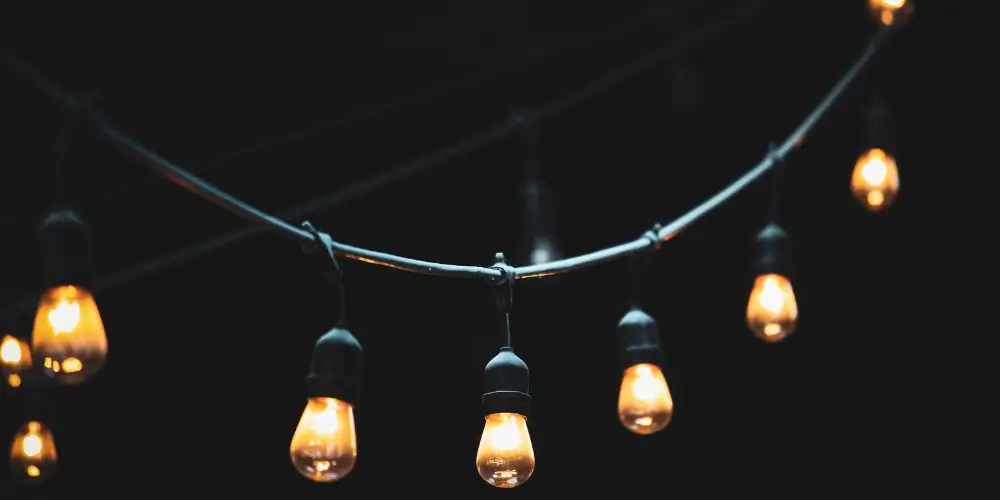
Understanding the Basics of Downlights
Downlights are integral components in modern lighting design and are available in various configurations, including non-fire-rated versions. Central to their appeal is their ability to integrate seamlessly into architectural features while providing efficient and effective illumination. Understanding the technical specifics of downlights is crucial for professionals aiming to optimise both functionality and aesthetics in lighting solutions.
- Downlight Types: This category includes recessed, surface-mounted, and adjustable designs, each offering unique lighting effects and integration capabilities.
- Installation Techniques: Requires precise cut-outs in ceilings and careful consideration of wiring and spacing to guarantee uniform illumination and adherence to safety standards.
- Energy Efficiency: Modern downlights often use LED technology, which provides significant energy savings and longer lifespans compared to traditional halogen bulbs.
- Aesthetic Considerations: The choice of bezel finishes and colour temperatures allows downlights to complement a variety of interior designs and colour schemes.
- Lighting Technology: Advances include dimmable features and compatibility with smart home systems, enhancing user control over lighting environments.
Professionals must consider these elements to fully leverage the potential of downlights in residential and commercial spaces.
Mastery of downlight specifications and deployment can profoundly impact the overall effectiveness and efficiency of lighting installations.
Why Fire-Rated Options Are Often Preferred
While Downlights’ technical specifications and aesthetic considerations are essential to their integration into modern architectural design, the safety features they offer cannot be overlooked.
Fire-rated downlights are often preferred due to their significant fire-rated benefits, which enhance the overall safety and compliance of lighting installations. These fixtures are designed to resist the spread of fire, allowing for vital evacuation time and limiting structural damage.
Fire-rated downlights adhere to stringent installation standards and safety regulations, which dictate the use of superior lighting materials that can withstand high temperatures and maintain integrity under fire conditions. This compliance is critical in both residential and commercial settings, where the safety of occupants is paramount.
The integration of these lights involves manoeuvring various compliance challenges, ensuring that every component meets the required safety codes.
Moreover, the preference for fire-rated options is not just about meeting legal requirements but also about proactive risk management. Building owners and designers opt for these solutions to mitigate potential liabilities and enhance the asset’s value by ensuring it adheres to the highest safety standards.
Fundamentally, the choice of fire-rated downlights reflects the commitment to safety and excellence in modern construction practices.
Fire Safety Concerns with Lighting Installations
The installation of non-compliant lighting fixtures, such as non-fire-rated downlights, considerably elevates the risk of fire propagation within building structures.
Compliance with safety codes that mandate the integration of fire-resistant ceilings is vital in mitigating this risk and enhancing overall fire safety.
These codes guarantee that, in the event of a fire, the spread is contained and the structural integrity of the building is maintained, providing essential escape time for occupants.
How Non-Compliant Fixtures Can Increase Fire Risk
Many lighting installations that fail to adhere to established compliance standards, particularly those involving downlights, greatly heighten the risk of fire within residential and commercial structures.
Non-compliant fixtures can compromise the integrity of a building’s electrical system, creating significant fire hazards that could otherwise be mitigated through strict adherence to lighting regulations and residential compliance.
Key issues arising from the use of non-compliant downlights include:
- Overheating: Non-fire-rated downlights can accumulate excessive heat, potentially igniting surrounding flammable materials.
- Faulty Wiring: Improper installation or substandard wiring practices can lead to electrical shorts, a common precursor to electrical fires.
- Inadequate Insulation: Non-compliant fixtures often lack proper insulation, increasing the risk of heat transfer to combustible components of the building structure.
- Violation of Safety Codes: Using fixtures that do not meet local building inspections and electrical safety standards can lead to violations that not only risk safety but also incur legal penalties.
- Lack of Certification: Fixtures without the necessary safety certifications fail to guarantee that they have been tested to withstand conditions without causing fire or electrical hazards.
Importance of Fire-Resistant Ceilings in Safety Codes
Incorporating fire-resistant ceilings into building designs is a vital component of safety codes aimed at minimising fire risks associated with electrical lighting installations, particularly downlights. The integration of fire-resistant materials in ceiling constructions not only enhances the containment of potential fires but also aligns with stringent safety regulations. Professionals in the field must adhere to precise installation standards and compliance guidelines to guarantee that these safety measures are effectively implemented.
The choice of ceiling materials plays a significant role in achieving the required fire resistance. Materials such as gypsum boards and mineral fibre tiles are commonly used due to their superior fire-retardant properties. These materials slow the spread of fire, providing essential time for evacuation and response.
| Feature | Benefit |
| Fire Resistance | Limits fire spread, enhances safety |
| Compliance | Meets legal and safety standards |
| Material Quality | Guarantees durability and performance |
Adhering to established safety regulations and installation standards is important for compliance and maintaining the integrity of fire-resistant systems. Professionals must continuously update their knowledge of compliance guidelines to keep pace with evolving safety requirements, thereby guaranteeing that ceiling installations contribute effectively to overall building safety.
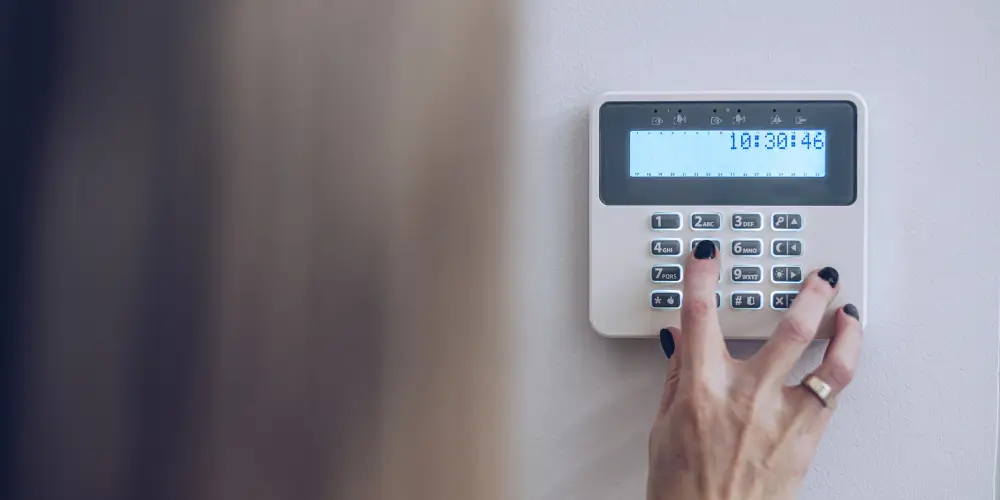
EICR Codes Related to Lighting Safety
The Electrical Installation Condition Report (EICR) employs specific codes to classify the urgency of issues detected in evaluating the safety of lighting installations, particularly downlights.
A C2 code is issued when downlights present a potential risk to the safety of the property, necessitating immediate remedial actions.
Conversely, a C3 code indicates areas where the installation does not comply with current safety standards, suggesting that improvements are advisable though not immediately critical.
C2 Code: When Downlights Pose a Potential Risk
While downlights enhance indoor aesthetics and functionality, their improper installation or deterioration over time can present significant hazards, meriting a C2 classification under Electrical Installation Condition Report (EICR) codes. This designation is essential for maintaining rigorous safety standards in electrical installations, particularly in areas susceptible to fire risks and other safety concerns.
The C2 code is applied when downlights are not in compliance with current safety standards and pose a potential danger. Key aspects of this risk include:
- Fire Safety: Downlights that are not fire-rated can compromise the integrity of fire-resistant barriers, increasing the risk of fire spread.
- Installation Guidelines: Incorrect fitting, such as being too close to flammable materials or inappropriately sealed units, heightens the risk.
- Electrical Hazards: Exposed wiring or faulty connections can lead to short circuits or electrocution.
- Lighting Regulations: Non-compliance with national or local lighting regulations may lead to hazardous conditions.
- Compliance Measures: Lack of regular inspections and updates to meet evolving standards can leave existing installations dangerously outdated.
Understanding and addressing these issues is essential for professionals dedicated to ensuring the safety and compliance of electrical installations.
Detailed attention to installation and maintenance can prevent the escalation of these hazards into severe accidents or violations.
C3 Code: Non-Compliance That Requires Attention
How does the C3 code influence lighting safety standards under the Electrical Installation Condition Report (EICR)?
The C3 classification within the EICR framework specifically addresses scenarios where lighting installations, such as non-fire-rated downlights, do not comply with current safety standards but are not immediately hazardous. This code is essential for signalling non-compliance that, while not posing a direct threat, requires rectification to elevate the installation to the latest regulatory updates and safety norms.
The application of C3 codes compels electrical professionals to reassess and enhance installation practices to mitigate compliance risks. For instance, in the context of downlights that lack fire ratings, the C3 code advises on potential upgrades or modifications that align with enhanced fire safety protocols, thereby preempting any future risks that could emerge from non-compliance.
It serves as a preemptive measure, ensuring that all lighting systems meet the basic operational standards and are updated to comply with evolving safety regulations.
C3 codes, therefore, play an essential role in maintaining a high standard of electrical safety, urging continuous improvement and adherence to stringent compliance and safety benchmarks.
This proactive approach in the EICR system greatly contributes to minimising potential fire hazards and other safety issues in electrical installations.
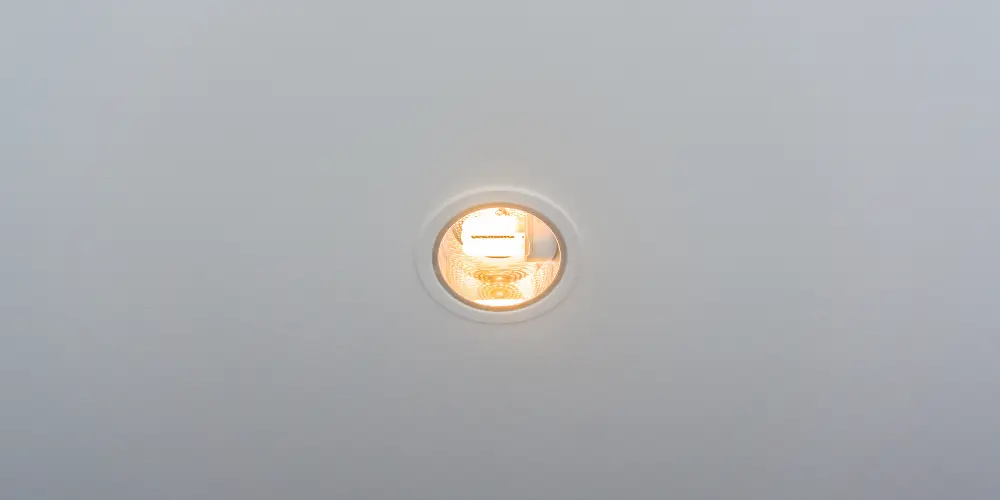
EICR and Building Regulations for Downlights
Understanding the intersection between EICR Observation codes and Building Regulations is essential for ensuring the safety and compliance of downlight installations.
Adherence to Part B of the Building Regulations, which focuses on fire safety, directly influences the criteria set by EICR for electrical installations.
This compliance is integral not only to meet eicr legal requirements but also to guarantee that electrical systems do not pose a fire hazard and are systematically inspected and tested.
How Building Regulations Affect EICR Codes
Several building regulations directly influence the Electrical Installation Condition Report (EICR) codes applicable to the installation and maintenance of downlights. These regulations guarantee that all electrical installations, including downlights, comply with updated safety standards to minimise risks.
The key areas impacted by building regulations include:
- Building Code Compliance: Guarantees that all electrical installations align with current building codes, promoting uniformity and safety in construction practices.
- Electrical Safety Standards: High standards are set for electrical installations to prevent hazards such as electrical shocks, fires, and other risks.
- Fire Safety Regulations: While detailed fire safety will be discussed later, it’s vital to note that general fire prevention measures are assessed during EICR evaluations.
- Installation Best Practices: Guidelines for the correct installation of downlights, thereby enhancing the overall safety and performance of the lighting system.
- Risk Assessment Methods: Systematic approaches are used to identify, evaluate, and mitigate risks associated with electrical installations.
Adherence to these regulations is essential for maintaining the integrity and safety of electrical systems within buildings, and it directly impacts the findings and recommendations in an EICR.
This structured approach guarantees that every aspect of an installation is scrutinised against rigorous standards.
Compliance with Part B (Fire Safety) of Building Regulations
Compliance with Part B (Fire Safety) of the Building Regulations is essential when installing and maintaining downlights in any structure. These regulations guarantee that lighting installations do not compromise the fire integrity of buildings, particularly in residential and commercial spaces where safety is paramount.
For downlights, this typically requires the use of fire-rated fixtures that resist the spread of flames, thereby providing added protection in the event of a fire.
Electrical compliance, as it pertains to downlights, involves adhering to stringent installation practices that align with both national lighting standards and specific building codes. Installers must ascertain that any penetrations made in fire barriers, such as ceilings, are properly sealed with materials that maintain the barrier’s original fire resistance rating. This is vital in preventing the vertical or lateral spread of fire.
Building inspections play a pivotal role in verifying that the installed downlights meet these rigorous standards. Inspectors assess the compatibility of electrical fixtures with the existing building infrastructure, focusing on safety enhancements and risk minimisation.
When Non-Fire Rated Downlights Become a Concern
When poorly installed, non-fire-rated downlights present significant safety risks and can often result in the issuance of a C2 or C3 code under EICR assessments.
Key indicators of substandard installation include improper sealing around the fixture, use of incompatible materials, and inadequate clearance from insulation materials, which may compromise the integrity of the ceiling’s fire resistance.
These factors necessitate thorough inspection and documentation to assess the potential hazards they pose to both property and occupants.
Signs of Poor Installation Practices
While non-fire-rated downlights may initially seem adequate for many residential settings, their installation often reveals important shortcomings that can pose significant safety risks.
These shortcomings not only compromise the installation quality but also elevate fire risk, contravening established safety standards. Insight into the technical deficiencies that characterise poor installations can guide more compliant lighting design and installation practices.
Key signs of poor installation include:
- Inconsistent Spacing and Alignment: Proper lighting design requires uniform spacing for ideal illumination and aesthetics. Deviations suggest a lack of planning and technical oversight.
- Loose Fittings: Non-fire-rated downlights should fit securely. Loose fittings can lead to electrical hazards and reduced lamp life.
- Inadequate Insulation Clearance: Without sufficient clearance, there’s an increased risk of overheating, which could ignite surrounding materials.
- Visible Damage to Wiring: Installation should preserve wire integrity. Visible nicks or frayed wires indicate poor handling and pose significant safety concerns.
- Non-compliance with Local Codes: Each installation must adhere to local electrical and building codes. Non-compliance poses safety risks and has legal and insurance implications.
Addressing these issues is essential to guaranteeing safety and compliance, reducing potential liabilities, and enhancing the overall quality of the lighting environment.
Factors That Can Trigger a C2 or C3 Code
Understanding the installation issues associated with non-fire-rated downlights is foundational to recognising the circumstances under which these installations might warrant a C2 or C3 code designation. A C2 code, indicative of potentially dangerous conditions, can be triggered by several factors, primarily centred around the violation of fire safety protocols and electrical compliance.
Non-fire-rated downlights lacking proper fire barriers pose a significant risk, particularly in multi-storey buildings where rapid fire spread through ceiling voids can occur.
The assessment leading to a C3 code, suggesting improvement is recommended, may arise from inadequate adherence to installation guidelines or deviations from lighting regulations. This typically involves scenarios where the installed downlights do not compromise immediate safety but fail to meet best practices for long-term risk mitigation.
For instance, incorrect spacing from flammable materials or insufficient insulation clearance can elevate temperatures, degrading surrounding structures over time.
Both codes rely on a detailed risk assessment process, evaluating how deviations from standard electrical and safety norms could lead to hazardous situations.
Electrical professionals must rigorously apply and enforce lighting regulations and safety standards to prevent the need for such codes.
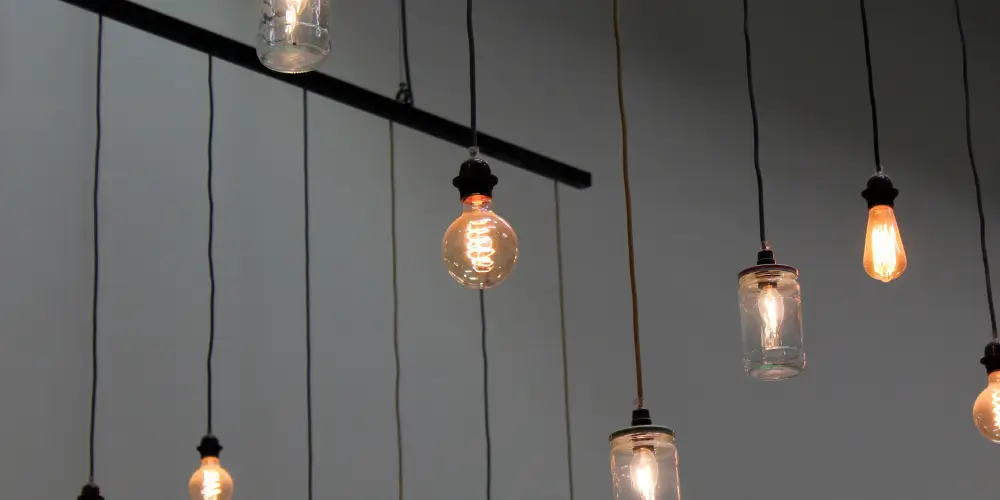
Upgrading Non-Compliant Lighting Fixtures
It is imperative to outline the procedural steps for replacing non-compliant lighting fixtures, specifically downlights that fail to meet current fire safety standards, to address the critical need to upgrade them.
The shift to fire-rated downlights aligns with the enhanced safety protocols of the Electrical Installation Condition Report (EICR) and greatly mitigates the risk of fire in residential and commercial buildings.
This process involves the selection of compliant fixtures, proper insulation displacement, and verification of fire-rating consistency with existing building codes.
Steps to Replace Downlights with Fire-Rated Options
Replacing outdated downlights with fire-rated options is an essential step in guaranteeing compliance with current electrical installation condition report (EICR) standards. This upgrade not only enhances safety by preventing the spread of fire through ceiling voids but also aligns with modern requirements for energy efficiency and aesthetic integration.
The shift involves several critical steps, each requiring meticulous attention to detail to guarantee both regulatory compliance and functional performance.
- Selection of Fire-Rated Materials: Choose downlights that are certified to resist fire for a specified duration, typically ranging from 30 to 120 minutes, and made from materials that can withstand high temperatures.
- Installation Techniques: Employ skilled electricians who are familiar with the latest standards in fire safety and electrical installations. This includes proper insulation around the downlights and secure fittings to maintain the integrity of the fire barrier.
- Assessment of Energy Efficiency: Opt for LED downlights, which offer superior energy savings and a longer lifespan, reducing both environmental impact and operating costs.
- Consideration of Lighting Aesthetics: Select fixtures that complement the interior design while providing adequate and efficient lighting.
- Evaluation of Cost Considerations: Balance upfront costs against long-term savings in energy bills and potential insurance benefits due to improved fire safety standards.
The Role of Fire Hoods in Ensuring Safety
Fire hoods play a pivotal role in enhancing the safety of non-fire-rated downlights by providing a protective barrier that helps to contain and prevent the spread of fire within ceiling voids.
These devices are particularly important when retrofitting older lighting installations that do not meet current fire safety standards.
It is essential to determine when fire hoods offer a viable compliance solution, taking into account the specific requirements of the Electrical Installation Condition Report (EICR) standards.
How Fire Hoods Improve Non-Fire Rated Downlights
The installation of fire hoods can greatly enhance the safety features of non-fire-rated downlights, effectively mitigating the risks associated with potential fires. Fire hoods serve as a protective barrier, reinstating the integrity of the ceiling that is compromised when downlights are fitted. Their primary role is to contain and limit the spread of fire, providing vital time for evacuation and response.
Heat Resistance
Fire hoods are composed of materials that can withstand high temperatures, thereby preventing the rapid spread of flames.
Material Types
Typically made from intumescent materials or fire-resistant fabrics, these hoods offer robust protection.
Fire Hood Benefits
Beyond safety, they also contribute to energy efficiency by minimising heat loss and preventing drafts.
Compliance Requirements
Installing fire hoods helps meet building and safety codes, which demand that any breach in fire resistance due to fixtures be adequately protected.
Installation Procedures
Properly installing fire hoods involves securing them around the downlight, guaranteeing a tight fit that prevents gaps where fire could penetrate.
Understanding these aspects guarantees that the application of fire hoods to non-fire-rated downlights is both a practical and mandatory safety measure.
When Fire Hoods Are an Acceptable Solution
In many scenarios, fire hoods represent an effective solution for augmenting the fire safety of environments equipped with non-fire-rated downlights. These protective covers are engineered to restore the fire resistance of ceilings compromised by the installation of downlights, thereby preventing the rapid spread of fire. This is particularly essential in multi-story buildings where fire barriers between floors are important.
Fire hoods are beneficial not only for their primary function of enhancing safety but also for offering versatility in aesthetic choices and minimal performance impact on the lighting itself. However, their adoption must be guided by stringent installation guidelines to guarantee effectiveness. The installation of fire hoods should align with manufacturer instructions and local safety codes to maintain both functionality and compliance.
| Aspect | Details |
| Fire Hood Benefits | Enhances fire safety, allows aesthetic integration |
| Installation Guidelines | Must comply with local codes; precise fitting required |
| Cost Considerations | Varies by material and design, long-term safety investment |
Considering cost considerations, investing in fire hoods should be viewed not merely as an expense but as a significant investment in safety. The choice of material and specific design can influence both the cost and the installation process, necessitating a careful balance between budget and safety requirements.

Addressing EICR Failures in Residential Lighting
Addressing EICR failures in residential lighting often begins with identifying common issues, such as inadequate circuit protection and improper downlight installation.
Professional guidance for compliance emphasises the importance of adhering to stringent standards for electrical installations to mitigate risks associated with fire and electrical hazards.
Implementing corrective measures based on detailed inspection reports is essential for ensuring the safety and functionality of residential lighting systems.
Common Lighting Issues Found During Inspections
Identifying common lighting issues during electrical inspections often reveals a range of failures that can lead to an unsatisfactory Electrical Installation Condition Report (EICR) for residential properties.
These issues often compromise the safety, functionality, efficiency, and aesthetic value of the lighting system. A systematic understanding of these failures is essential for maintaining compliance with the relevant electrical safety regulations.
Common deficiencies include:
- Inadequate adherence to installation guidelines: Incorrect fitting of downlights can lead to excessive energy consumption and reduced lighting efficiency. Installers must guarantee that all fixtures are correctly aligned and secured.
- Non-compliance with safety regulations: This includes the use of non-fire-rated downlights in areas where fire resistance is mandated, potentially risking safety.
- Poor energy efficiency: Older or improperly selected lighting fixtures can greatly increase energy consumption, contrary to current standards advocating for energy conservation.
- Degradation in downlight aesthetics: Failing to match the downlight design with the interior decor can negatively impact the room’s overall aesthetics.
- Faulty or outdated wiring can pose serious safety hazards and affect the lighting system’s functionality, necessitating immediate rectification to meet EICR standards.
Professional Guidance for Compliance
To guarantee compliance with Electrical Installation Condition Report (EICR) standards for residential lighting, professionals must adhere to stringent guidelines and adopt best practices during installations and inspections. Emphasising compliance strategies, electricians must confirm that the appropriate safety certifications accompany all downlight installations. This typically involves verifying that the products meet local building code requirements and possess relevant fire safety ratings.
To address EICR failures, particularly in non-fire-rated downlights, professionals should consider downlight alternatives that inherently meet higher safety standards. Such alternatives could include LED fixtures with integrated fire protection, offering both energy efficiency and enhanced safety.
Detailed installation guidelines must be meticulously followed to avoid common pitfalls that lead to non-compliance. These guidelines include precise cut-out dimensions, adequate insulation clearance, and correct wiring practices in accordance with the national electrical codes.
Conducting thorough risk assessments prior to any electrical work is vital. These assessments should identify potential hazards related to incorrect downlight installation, such as overheating risks or circuit overloads.
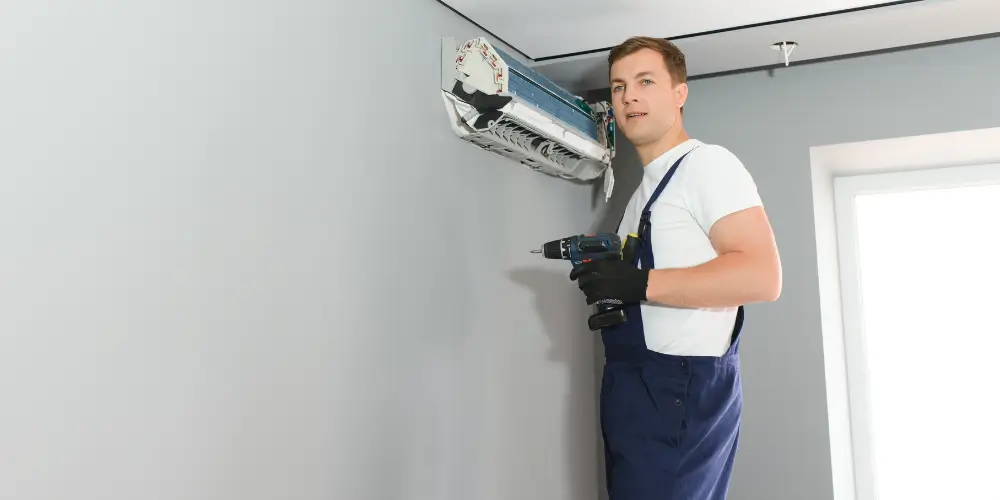
How to Prepare Your Property for an EICR
As you prepare your property for an Electrical Installation Condition Report (EICR), it is essential to adhere to a thorough pre-inspection checklist that focuses on all lighting installations, with particular attention to downlights.
Homeowners must guarantee that these fixtures comply with the latest safety standards and are properly installed and maintained to prevent any compliance issues during the assessment.
This process involves verifying the integrity of electrical connections, the suitability of insulation surrounding the downlights, and the overall operational efficiency of the lighting system.
Pre-Inspection Checklist for Homeowners
Making certain that your property is adequately prepared for an Electrical Installation Condition Report (EICR) can greatly streamline the inspection process and help in identifying potential issues more efficiently.
Homeowners play an essential role in this pre-inspection preparation, making certain that the electrical system is both accessible and compliant.
Thorough preparation not only facilitates a smoother inspection but also enhances the safety and efficiency of the electrical installations.
To effectively prepare your property, consider the following checklist:
- Access Clearance: Make certain all electrical panels and components are easily accessible and free from obstructions.
- Documentation Review: Gather all relevant compliance documentation, including previous EICR copies, installation receipts, and any warranty information.
- System Test: Conduct a basic test of lighting fixtures and outlets to identify any apparent malfunctions or irregularities.
- Visual Inspection: Perform a preliminary visual inspection to spot any exposed wires, overloaded sockets, or outdated equipment.
- Safety Measures: Implement basic lighting safety tips, such as verifying the secure fit of all fixtures and the appropriate rating of bulbs.
This checklist not only prepares your property for inspection but also deepens your understanding of the homeowner’s responsibilities related to maintaining an efficient and compliant electrical system.
Ensuring Downlights Meet Safety Standards
Building upon the foundational steps of general preparation for an Electrical Installation Condition Report (EICR), specific attention must now be directed towards the safety and compliance of downlights on your property.
Adhering to stringent lighting regulations guarantees that your downlights enhance aesthetic appeal and uphold essential safety measures. Employ advanced installation techniques that comply with the latest compliance standards, meticulously verifying that all components meet specified criteria for thermal management and electrical safety.
A thorough risk assessment should precede any installation or maintenance of downlights. This evaluation must scrutinise the electrical load, insulation proximity, and fixture compatibility to preempt potential hazards such as overheating or electrical shorts.
If downlights are located on fire-sensitive structures, verify that they are fitted with appropriate fire-rated enclosures. This is vital in maintaining the integrity of your property’s fire safety design.
Lastly, check that all downlights are certified by recognised testing authorities and that their installation aligns with national electrical codes. Regular updates on local and national lighting regulations are imperative to remain compliant.
Can Fire Hoods Fix Non-Fire-Rated Installations?
To address the compatibility of fire hoods with non-fire-rated downlight installations, it is necessary to evaluate whether these hoods can effectively upgrade the fire resistance of existing setups. Fire hoods are designed to encapsulate downlights, thereby restoring the integrity of the ceiling’s fire resistance, which is typically compromised by the installation of non-fire-rated fixtures.
However, the effectiveness of fire hoods depends on several significant factors:
- Material and design: The manufacturing materials and the specific design of the fire hood play essential roles in its performance under fire conditions. Materials must withstand high temperatures and prevent the passage of flames and hot gases.
- Correct installation: Proper installation is key. This involves guaranteeing a tight fit around the downlight without gaps that could allow fire to pass through. The installation process itself should adhere strictly to manufacturer guidelines to guarantee peak performance.
- Compatibility with existing fixtures: Not all fire hoods are universally compatible with all downlight models. You must select a fire hood that fits the specific model and size of the installed downlights.
- Ventilation concerns: Adding a fire hood can affect the heat dissipation of the downlights, potentially leading to overheating unless the hood is designed to allow adequate airflow.
- Certification and compliance: It is critical to use products that are tested and certified for fire resistance in accordance with relevant standards and regulations.
Incorporating fire hoods can address fire safety concerns and help in meeting compliance challenges. Still, they must be carefully selected and correctly installed to be effective.
This approach can enhance the overall energy efficiency of the lighting installation, provided that heat management is adequately addressed. Consequently, product selection must be informed by a thorough understanding of the specific requirements and constraints of the existing installation.
Frequently Asked Questions
What Is the Average Cost of Replacing Non-Fire Rated Downlights?
The average cost of replacing non-fire-rated downlights depends on various factors, including material quality, installation fees, labour expenses, and energy efficiency considerations.
How Do Non-Fire-Rated Downlights Affect My Home Insurance?
Non-fire-rated downlights may compromise fire safety, potentially affecting home insurance policies. Insurers might conduct a risk assessment, considering adherence to electrical standards, which could influence premiums and the claim process during incidents.
Are There Specific Brands That Offer Safer Downlight Alternatives?
How Long Does a Typical EICR Inspection Take?
The duration of an EICR inspection varies based on several factors, including property size and electrical system complexity. Typical timelines range from 3 to 4 hours, adhering to rigorous safety standards during electrical assessments.
Can I install Non-fire-rated downlights in a commercial setting?
Installing non-fire-rated downlights in a commercial setting generally contravenes commercial lighting regulations and fire safety standards, potentially compromising Commercial EICR compliance requirements, electrical installation guidelines, and risk assessment procedures necessary for ideal safety and functionality.

